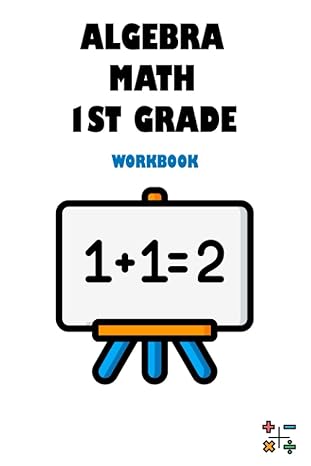Question
2. Calculate the angular speed of the 26-inch bicycle rotating at 200 revolutions per minute. Express your answer in radians per minute. Use = 3.14.
2. Calculate the angular speed of the 26-inch bicycle rotating at 200 revolutions per minute. Express your answer in radians per minute. Use = 3.14. Round to the nearest whole number.
3. Next, calculate the linear speed of the 26-inch bicycle being pedaled at a rate of 200 revolutions per minute. Express your answer in inches per minute rounded to the nearest whole number. (Hint: The diameter of the wheel is 26 inches.)
4. Expressing a speed in inches per minute has very little meaning in the context of the problem. It would be more useful to express the answer in miles per hour. Use dimensional analysis procedures to transform your answer from problem 3 into miles per hour, rounded to the nearest tenth.
5. Use your answers to problems 2-4 to calculate the linear speed, in miles per hour, of a 20-inch bicycle being pedaled at a rate of 200 revolutions per minute. Round to the nearest tenth.
6. Now that you have calculated the linear speed of both bicycles, look back at your answer to problem 1. Were you correct about which bicycle was going faster? If so, explain why, using the results of problems 2-5. If you were not correct, revise your answer to problem 1 in this problem, using the results of questions 2-5 in your response.
7. Suppose you are riding the 20-inch bike illustrated in this set of problems, and a friend is riding the 26-inch bike. Assuming that your friend is pedaling the 26-inch bike at a rate of 200 revolutions per minute, will you have to pedal the 20-inch bike faster or slower than 200 revolutions per minute for you and your friend to be riding at the same speed? Explain your answer in terms of angular and linear velocity.
8. At what rate would you have to pedal a 20-inch bike so that it traveled at a linear speed of 15.5 miles per hour? Express you answer in revolutions per minute rounded to the nearest whole number. (Hint: First change miles per hour into inches per minute.)
Step by Step Solution
There are 3 Steps involved in it
Step: 1

Get Instant Access to Expert-Tailored Solutions
See step-by-step solutions with expert insights and AI powered tools for academic success
Step: 2

Step: 3

Ace Your Homework with AI
Get the answers you need in no time with our AI-driven, step-by-step assistance
Get Started


